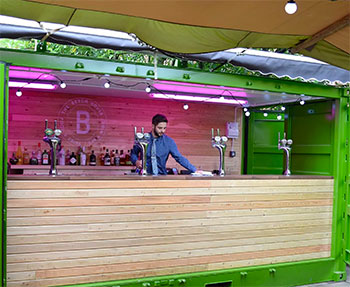

You love your new start-up business and you're excited about your product/service. You've got a new website, had your business cards printed, been to a few networking events - it's only a matter of time before you're swamped with customers and clients, right? If only it were that simple.
One of the main challenges facing any start-up is getting publicity. No one can guarantee coverage for your business - even established companies struggle - but with some creativity and strategic thinking, you can improve your chances of getting that piece in the local paper or increasing the activity on your website, helping to raise your profile and win customers.
As a start-up, buying in PR expertise can be beyond your budget, so to get you on your way, here are a few tips to help you get your PR activities off the ground.
Getting started
Before you invest any time, or money, in PR, be clear about what it is you want to achieve. As a start-up, your initial aim will no doubt be to draw attention to yourself and what you have to offer, with a view to building a customer or client base, but whatever your focus, the key to all PR is planning.
Strategic forethought is essential and any PR activity should be part of a planned campaign. If youre clear about what you want and how youll measure what youve achieved, youll be able to set realistic goals and allocate the right amount of effort to the task.
Know your audience
Whatever your product or service, you need to be clear about your target audience. Who do you want to reach? What are the other influences on your audience? Which group is most important to your success?
Research and preparation are vital: the more familiar you are with your target audience, the more effective your communication and the more successful the outcome.
Key messages
Every PR campaign, whether for the launch of a start-up or the promotion of a new product, needs a set of messages which will tell people more about what youre offering. These messages need to be clear, concise, easily understood and credible.
Make sure you know how to present these messages according to the different audiences you are trying to reach. The tone, context and format you choose impact on how the message is interpreted, so factor this in to your planning.
PR tools
Its important to choose the right tools for your PR needs. Printed media is still an option, particularly local and regional papers, while industry-specific trade publications are worth targeting.
An active and focused social media programme is an integral part of any PR activity now, but dont forget about blogs, responding to posts in targeted sites or creating your own. A blog written today can continue to drive traffic to your site in two years time.
You could always speak at a conference, have a stand at an exhibition, enter awards, organise a stunt, associate with other campaigns, but whatever tools you use, make sure they fit into the bigger picture.
Timeline
Think about the best time to launch your campaign. Is the season important? Is there an industry event which would provide a good focus? Knowing in advance what major events are happening can really make a difference.
The timing of each individual PR activity is also vital. Some may be linked to a specific holiday; some will tie in with the calendar of your target audience; some will take advantage of an external initiative (a national campaign day/week/month, for example).
Your schedule of activity must take account of lead times. Monthly magazines tend to have a three month lead in when planning out issues and researching editorial topics, and come out the month prior to their dated publication. Lead times need to be factored in to your timeline if deadlines and opportunities are not to be missed.
Test and measure
PR may be subtler and more difficult to quantify than other communication disciplines, but starting with clearly-defined measurable goals, and identifying how and what you are going to evaluate, will make measuring the success of your PR activity more straightforward.
Choose measurement benchmarks that can track progress over extended periods of time, allowing you to rectify any mistakes quickly, and keep your analysis manageable. If you issued a press release at the start of your campaign, did you get the coverage you wanted in the publications or sites you were targeting? Did this increase after additional activities? More importantly, note the type of coverage; after all, the quality is more significant than the quantity.
Tone and prominence are good indicators of success.
If one of your objectives was an increase in social media activity, there are various tools to help measure the results of your efforts, quantifying retweets, followers, recommendations, for example, as well as the all important qualitative factors such as relevance, impressions and sentiment.
Did you aim to increase traffic to your website, by, say, 20 per cent? What kind of improvement have you seen? Did you aim to double the number of calls you received into your business? Did you reach or exceed this? Remember, the evaluation of your PR activities will only be beneficial if you identified at the outset what you wanted to test and measure.
PR is not a luxury
Effective PR helps you to shape your brand and build your identity. To make sure youre on the right track with your campaign, it always pays to get some affordable PR advice. Communicating who you are and why customers should choose you above others is an expert activity. A small investment at the outset could reap dividends in the long run.
Ann Grain
Jag Press & Publicity





As we cannot be experts in every relevant subject, we would love to receive 'guest' articles that may be of interest to anyone running their own business or thinking of doing so. ADD YOUR ARTICLE
